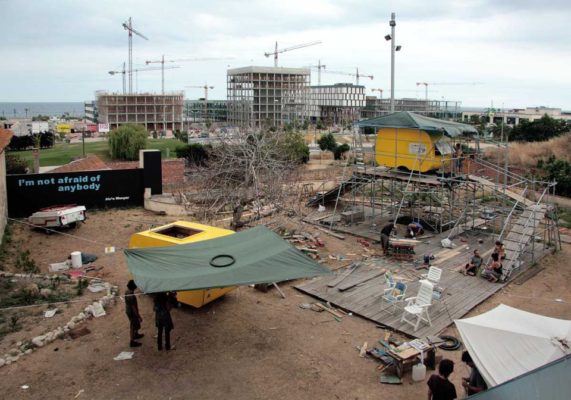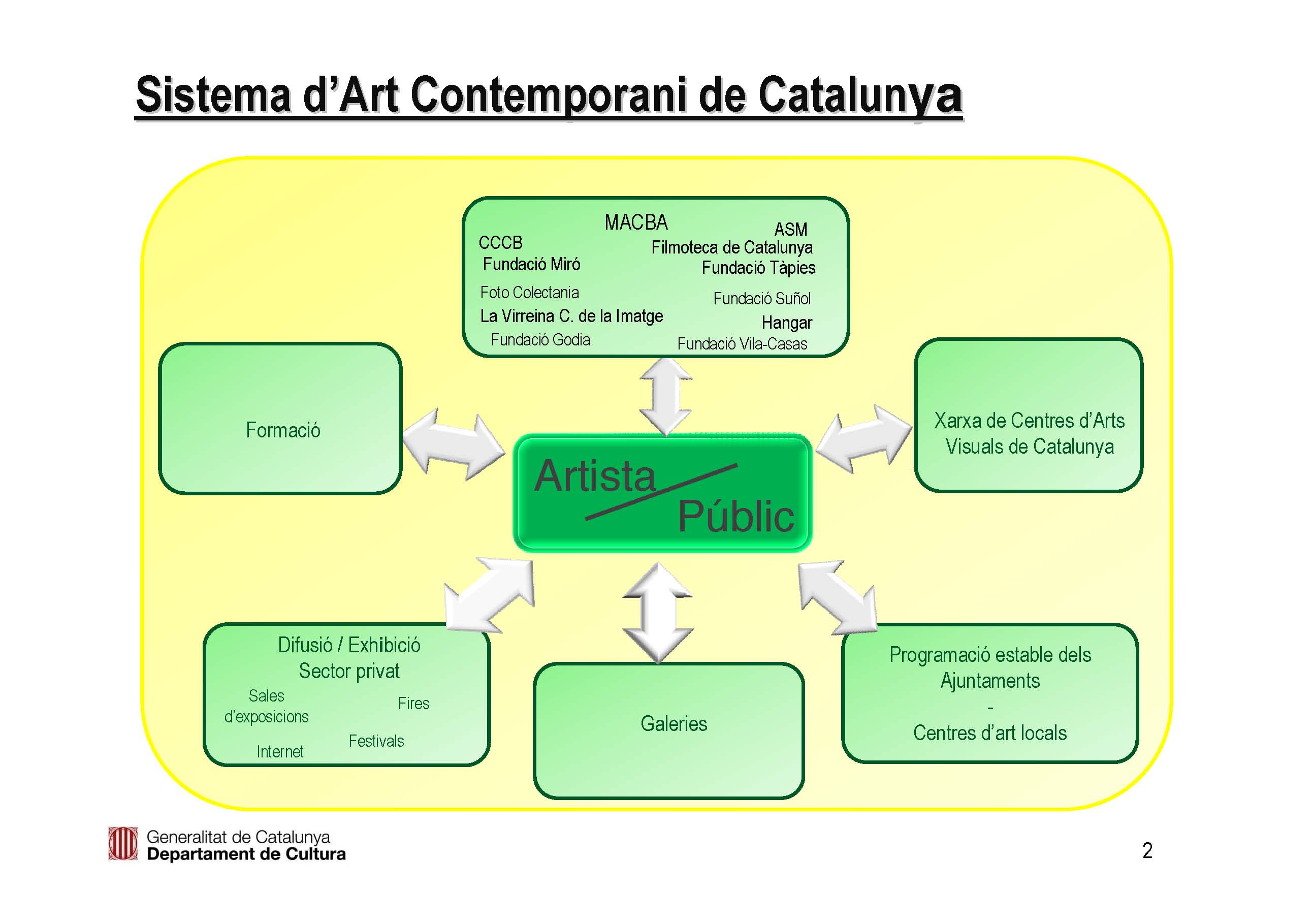Search
To search for an exact match, type the word or phrase you want in quotation marks.
A*DESK has been offering since 2002 contents about criticism and contemporary art. A*DESK has become consolidated thanks to all those who have believed in the project, all those who have followed us, debating, participating and collaborating. Many people have collaborated with A*DESK, and continue to do so. Their efforts, knowledge and belief in the project are what make it grow internationally. At A*DESK we have also generated work for over one hundred professionals in culture, from small collaborations with reviews and classes, to more prolonged and intense collaborations.
At A*DESK we believe in the need for free and universal access to culture and knowledge. We want to carry on being independent, remaining open to more ideas and opinions. If you believe in A*DESK, we need your backing to be able to continue. You can now participate in the project by supporting it. You can choose how much you want to contribute to the project.
You can decide how much you want to bring to the project.

Can Xalant, the centre for creation and contemporary thought in Mataró, had become a flagship for the latest deployment of art centres within the Catalan territory. The recent news of its closure and overhaul by the town council Mataró is alarming if we consider that, with a trajectory of only seven years, Can Xalant has surpassed its objectives and has consolidated itself as a centre for production working at full capacity across different territorial scales, connecting the city of Mataró with different national and international contexts.
In addition the situation should alarm us even more if we consider the implications that its closure has on the level of cultural policies. Can Xalant isn´t just one more in the string of cultural spaces, that Catalonia had accumulated in the last times, that are being dismantled, so much as what is being lost in this case is a space that from the beginning was considered exemplary. And this for different reasons.
In 2006 the centre began its activities, spearheading a Plan for Centres for Production and Creation under which the Generalitat has achieved a series of agreements with local administrations for the development of a network of art centres in different points of the Catalan territory. The model of management that was proposed within this framework also ended up being a step forward, countering the political dirigisme which cultural establishments in our country generally suffer from, by forming in the case of Can Xalant, a managing team through a public open call that led to the setting up of a cooperation between the company Trànsit Projectes and the association ACM, the latter a pioneer in the promotion of contemporary art in the same city, at that point for over ten years. Not even with the simultaneous deployment of creative factories that has taken place in different points across the Spanish State nor in so many other cases of art institutions have such successful situations of dialogue been achieved, between the public administration, the cultural industry and a network of artists.
In the rest of the centres that have been constituted in the later unfurling of the network we find variations upon the same model, as has been the case in Bòlit in Girona, ACVIC in Vic, and most recently Centre d’Art de Tarragona. Equally it is important to point out that this change of model also had important repercussions on across the Catalan context in general. As we can’t think that it was purely by chance that, only a year after its opening, the auditorium of Can Xalant housed the act of constituting the XarxaProd, la Xarxa d’Espais de Producció d’Arts Visuals de Catalunya (Network of Centres for Art Production in Catalonia), with which a second network was articulated that formalised the relation, in this case, between an important number of platforms, projects and spaces within the Catalan context. One of its first actions was to define a code of good practice for ways of managing and acting that was to be useful, in particular, as much in independent organisations as in publicly administered spaces.
But having reached 2012, with the reappearance of the deferred official approval of the project of the network of centres by the Generalitat, when the greatest threats are occurring to the continuity of a model such as that of Can Xalant. Though the centre finds itself at the very genesis of the policies regarding centres across the territory and one had hoped that the very constitution of the official network would serve to protect the model, with the presentation of the projected law of the Xarxa de Centres d’Art de Catalunya we find ourselves faced with a situation that is as paradoxical as it is damaging for the implications that it has on the level of public policies.
It is important to remember the words with which, the very month of March that this project was presented, that the minister for culture Ferran Mascarell used to talk about the closure of Espai Zer01 by the Town Council of Olot. Though Mascarell lamented it he also washed his hands of the situation arguing that the Generalitat couldn´t intercede in a decision that, in referring to a municipal space, corresponded entirely to Olot’s local government. So, when immediately after the presentation of the Xarxa de Centres d’Art de Cataluña it was announced that practically all the responsibility for these art centres was being transferred to the respective municipalities, the proposed decree couldn´t be read other than as a reckless act on the part of the Culture ministry or quite simply one made directly in bad faith. So when Pep Dardanyà, the director of Can Xalant, declared that, faced with the announcement of the closure by the Town Council of Mataró, he had felt “desperate” faced with a Generalitat that, even today, has not yet made any pronouncement about the situation, it does nothing more than confirm that the carom shot of the re-planning of the network of centres is beginning to take effect. After the case of the Espai Zer01 it was evident that breaking the symmetry between the local and autonomous administrations as far as regards the responsibility for centres that, ultimately, are hoped to have an impact that goes beyond the municipality, would lead them to a situation of extreme fragility, as the same time as allowing the Ministry for culture to wash its hands in the case of its collapse.
On the other hand, entering into questions of discourse, the fact that the Xarxa de Centres d’Arts Visuals de Cataluña has become a rat warren for the majority of art centres, to which it initially ought to lend support, also became fairly clear with the first screen of his powerpoint. There the change of agenda in relation to the mission of the public system of contemporary art in Catalonia was made patently clear, when nothing other than the statement of relation “artist / public” is situated as the central feature. That is to say, as far as the Minister of Culture is concerned, the framework of galleries, museums, local programmes, exhibition spaces, and of course, the same centres that articulate the Xarxa, have as their principal mission the creation of a public for contemporary art. Taking into consideration that Can Xalant is a centre specialised in production, that in place of popular exhibitions its task is to edit videos and soundtracks, or that instead of activities for family audiences it houses artists in residence, organizes international exchanges and programmes activities for specialised training in contemporary art, we could agree that in March 2012, the art centre’s death sentence was already declared.

The conversación that A*Desk published at the end of 2006 between Pedro Soler, then director of Hangar, and Pep Dardanyà, the director of Can Xalant, talked about how a centre specialised in production and at the same time located in a medium sized city and belonging to the public administration, had to consider some nuances with regard to the model of Hangar. In the case of Mataró it was considered that the centre couldn´t limit itself to providing resources to agents within the artistic sector and that, on the contrary, it also ought to mobilise processes of social devolution amongst its activities. We find ourselves then faced with a centre that actually had as one of its aim to try out new relations, already not with the public as an audience, so much as with the very social fabric. “Art / society” instead of “artist / public” was the formula that, in effect, was the first hypothesis that upheld the territorial network of the art centres, which, what is more, is much more in accord not just with current art practices, or equally the more recent concepts of cultural apparatus such as the factories of creation, but also with the definition of culture that we have heard Ferran Mascarell refer to and talk about at length, on so many other occasions.
With the closure of the Espai Zer01, Haizea Barcenilla upheld, also at A*Desk, that the current crisis of contemporary art in Catalonia has to be understood more as “a return to order“ than for economic reasons. And in effect with the closure of Can Xalant we are probably seeing the beginning of the end of public support for progressive models for the management and production of culture. It has been a centre, that has specifically worked to reinvent the ways art and citizens interact, and in this sense it is unquestionable the efforts that it has made during its years of existence to test solutions and think of paths of development for working within a network, collaboratively, decentralised, that led to yield returns in relation to distinct social ambits. A way of working that has hardly been experimented with up until now in artistic institutions within the Catalan context. And something that precisely in the times of crisis that are hitting us, would also be much more in accord with the possibility of finding ways of cultural contraction that were sustainable in relation to the needs of the cultural sector as well as the social fabric in general.
But lamentably it is not the case. At a time when culture is particularly fragile, we see how public administrations don´t just create and destroy, disregarding and ridding themselves of any responsibilities for what in the last years has managed to be built through dialogue, but also ooze an exacerbated populism. How else can we understand it if within the same legislature as the closure of Can Xalant, the grand cultural wager of the Town Council of Mataró has been the art collection of Luís Bassat, in which a consortium has been articulated, granted with an economic sum that duplicates the contribution of the municipality to the art centre, and which is defined no more and no less than as “a compiled body of contemporary art, reflecting the passion and tastes of its owners”?
The counterpart to this shift in how culture is utilised within the public arena of Mataró can also be found, on a larger territorial scale, when the president Artur Mas proceeded to sign this very week an agreement for the opening of a branch of the Hermitage in the port of Barcelona. At a time when the Generalitat has still made no comment on Can Xalant nor regarding the policies that it undertook with so many other centres scattered across the Catalan territory, as well as how it is leaving asphyxiated a large quantity of programming and cultural spaces that it has not yet assured they will receive the help conceded for this year 2012. The gesture of the president of the Generalitat can’t be received within the artistic sector as anything other than a new door being slammed shut.

Oriol Fontdevila thinks that the political and social dimensions of art practices and cultural phenomena are interesting; that the question of cultural innovation ought to be dealt in correlation with that of social progress: that cross-disciplinary working is an opportunity, not just to accumulate knowledge, but to generate surroundings from where to challenge them; and that art criticism and curating can contribute in this respect.
"A desk is a dangerous place from which to watch the world" (John Le Carré)